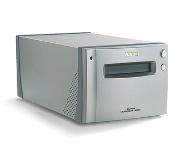
|
Image manipulation programmes A digital darkroom consists of a computer loaded with an operating system and software designed to work with images. Photo-manipulation software used to be specialised and expensive, now it is common place and can be cheap. Adobe Photoshop: Adobe Photoshop Elements: Paint Shop Pro: The Gimp: FREE Raw Converters: There are now a number of excellent 'Stand-Alone' raw file converters. Why do you need these programmes?
There are occasions when the colour of an image might need to be changed, either to correct a problem, or to deliberately alter the original. Brightness and contrast can also be adjusted.
Graphic Effects:
Graphic design:
Combining images:
An image manipulation programme is essential to work with images, but you might also find a use for a Desk Top Publishing programme if you intend creating publications. There is a wide choice of programmes available ranging from professional software like Quark Express through to MS Publisher. Scribus is excellent running on all operating systems. |
Much more on computers
Memory - RAM
A typical new computer will be supplied with 4gb of RAM, which is fine on a Linux computer but to work comfortably If you are running Windows - 4gb would be the minimum requirement and you probably need 8gb.
Storage - Hard Disk
To store images on the computer a reasonable size hard disk is required. In the past year the size of hard disks on new computers has risen so most have plenty of space, but older computers might have a problem. 80Gb should be large enough to accommodate the operating system, program files and work in progress, but bigger disks will be needed is you want to store a lot of images. Photographs can be large, one designed to print at A3 size will be about 50mb, 20 images will take up a Gigabyte of disk space.
External USB hard disks can be used to store and back-up files.
CD / DVD-Writer
In order to 'back-up' and transport images a CD/DVD-writer is important, whilst there are other options, a CD/DVD-writer is the cheapest and most flexible choice. Most computers have DVD-Roms so storing images on CD/DVD means that they can be seen on any computer. DVD writers are now cheap and can be used to back-up larger amounts of data. ( You will need a DVD - writer )
Monitor A good monitor is essential, professionals use large screens, but any size will do so long as it is capable of giving a clear sharp picture. IPS screens are the best - so spend a bit more and get a good one.
|
 |
|
Flatbed Scanners Will scan flat artwork and photographs. They need not be expensive and almost any of the scanners available will do a good job.
Some flatbed scanners with also scan from negatives, but generally these are not as good as dedicated film scanners. |
 |
|
Film Scanners Designed for film, are expensive, costing more than a basic computer. For the same price you can buy a good digital camera.
 |
